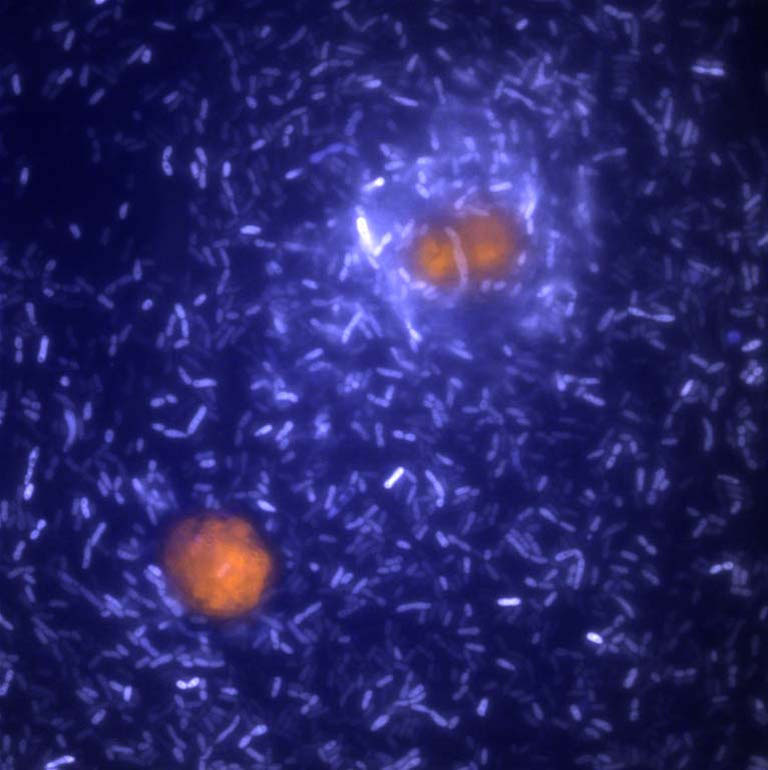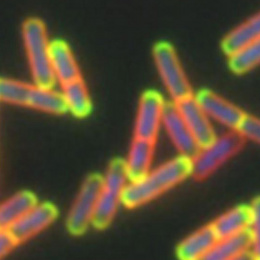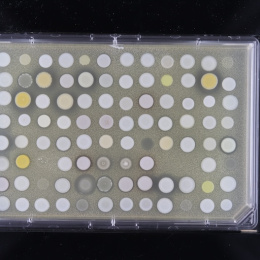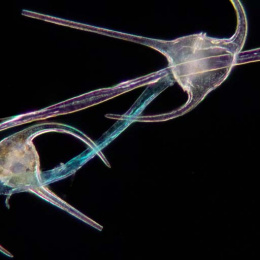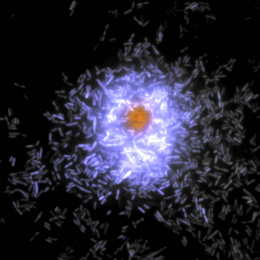Engineered Bacteria Feast on Phytoplankton 3
Engineered Bacteria Feast on Phytoplankton 3
Cherry Gao, Vicente I. Fernandez, Lars Behrendt, Roman Stocker
Parsons Laboratory at MIT
These images visualize the metabolic interaction between live bacteria and phytoplankton in the ocean. Symbiodinium cells (in orange) are single-cell, photosynthetic organisms that live in the ocean. Marine phytoplankton, such as Symbiodinium, exude metabolites into their surroundings that marine bacteria (in green and cyan) utilize as nutrients. One such Symbiodinium-derived metabolite is called DMSP (dimethylsulfoniopropionate). Phytoplankton such as Symbiodinium produce more than one billion tons of DMSP each year, and DMSP is a precursor of a gas (dimethylsulfide, or DMS) that is implicated in the formation of clouds.
I took these images to directly visualize the metabolic interactions between bacteria and phytoplankton in the ocean at the microscale. By visualizing the gradient of fluorescence in bacteria surrounding the phytoplankton, I can indirectly visualize the gradient of DMSP and other nutrients emanating from Symbiodinium cells.
This image focuses on the Symbiodinium cells. Their photosynthetic pigments (in orange) create features that are reminiscent of the face of the moon. In this image, yellow fluorescent protein is represented in greyscale (instead of in green as in other images) to highlight the Symbiodinium cells.
